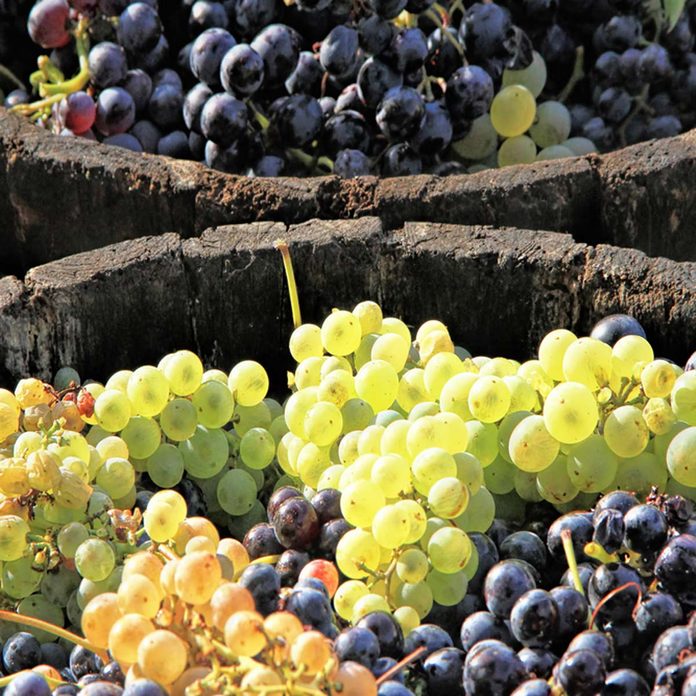
Choosing Varieties
The type of grape you grow depends on your climate and your taste. Are you looking for dessert grapes? Or perhaps you want to experiment with wine making, in which case the variety you choose will depend on the type of wine you wish to make. You can grow some type of grape in every region of the U.S. Consult your local cooperative extension office or website for specific varieties recommended for your region. Here is a directory of cooperative extension websites.

Siting Plants
The most important thing to consider when deciding how to grow grapes is where to situate the vines. Grapevines are forgiving when it comes to soil—in fact, they’ll grow quite nicely on stony hillsides—but they need good drainage. They also need plenty of sunlight, so keep them away from shade trees to prevent mildew from forming on the vines. In addition, avoid frost pockets, which can damage tender new growth.
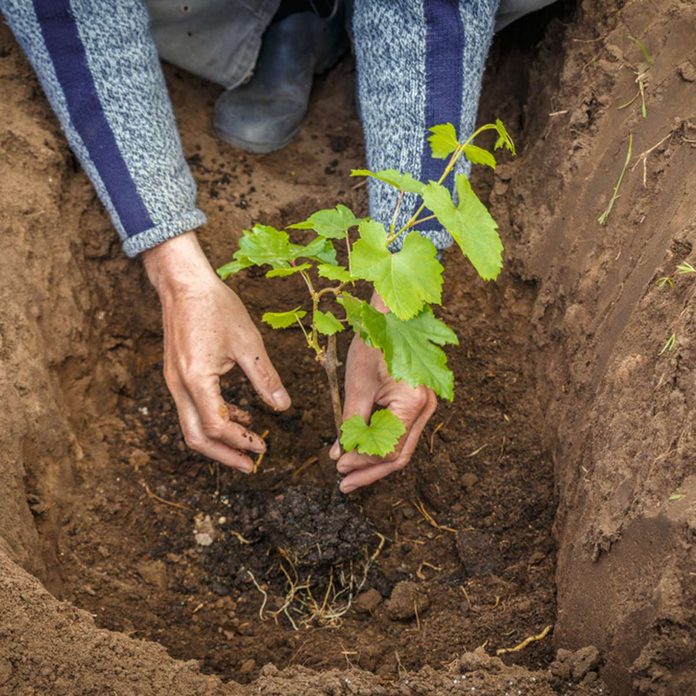
Planting
To grow grapes, space plants 5 to 6 feet apart in all directions. Multiple plants are usually positioned in rows to maximize the use of space and give vines room to spread out and ripen fruit, but vines can also be used to line a fence or cover a structure. Dig a hole and line the bottom of the hole with compost before planting to jump-start growth. Tamp the soil and water well.
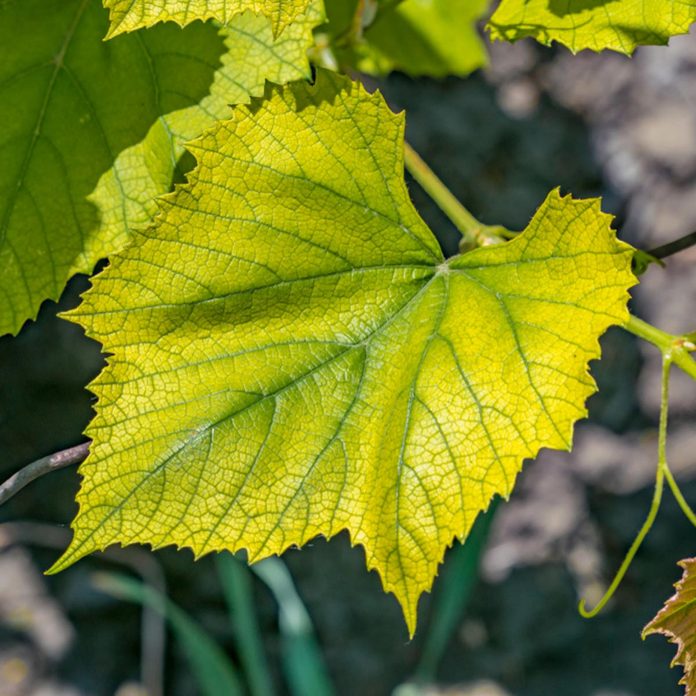
Fertilizing
The first year will be about plant growth, so it’s fine to apply a fertilizer high in nitrogen. After that, you want to grow grapes, not foliage, so fertilize only if plants are showing stunted growth or if a soil test shows a nutrient deficiency. When fertilizing mature grapevines, remember that the roots can spread out up to 8 feet, so apply throughout the bed, not just at the base of the plant. If you see chlorosis caused by a high-pH soil (see photo), you may need to lower the pH.
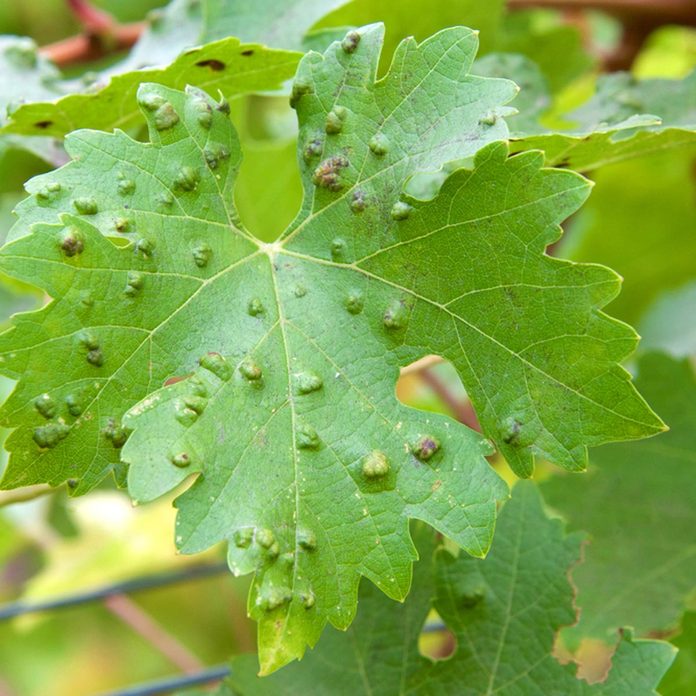
Pests
Leaf galls, which look like warts on grape leaves, are caused by tiny insects. Although the foliage may look unsightly, the galls do not affect the grapes, so there is no need to treat the grapevines.
Meet the 10 worst garden pests and learn how to get rid of them.
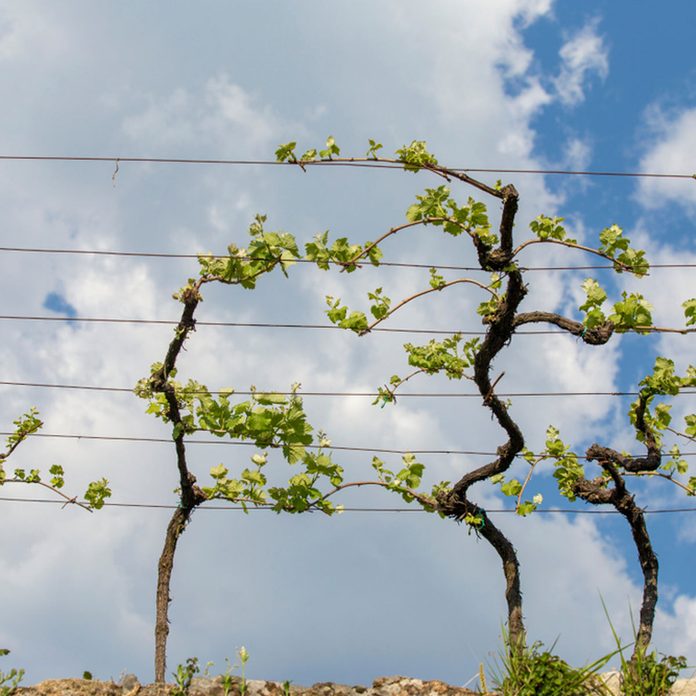
Training Vines
To grow grapes efficiently, some sort of support is needed. A common method is to connect sturdy wooden posts with strands of wire set at specific increments. Serious vineyards have as many as five strands of wire but home gardeners can get by with two strands positioned 3 and 5-1/2 feet above ground level, respectively.
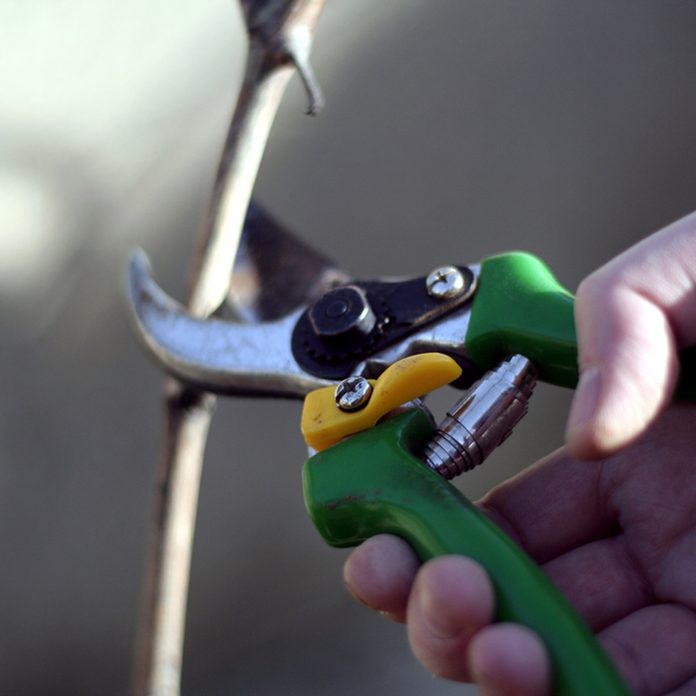
Pruning
There are a lot of rules to follow when pruning grapevines—and homeowners who want to avoid confusion can ignore most of them. The main thing is to keep your grapevines from becoming a tangled mass of stems at the expense of fruiting. In short, select four good stems and remove the rest. Then train these four stems on the wire support system. Pruning is best done in late winter, when grapevines are dormant. Sucker growth arising from the base can be yanked out in summer.
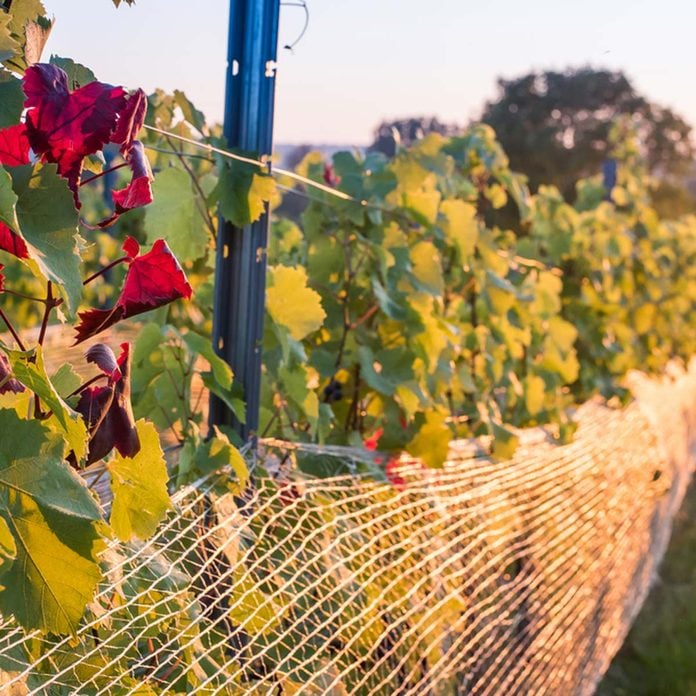
Protecting the Crop
If you’re learning how to grow grapes, you also need to learn how to protect grapes. From deer. From rabbits, From birds. An 18-inch section of chicken wire will frustrate rabbits and bird netting will dissuade overhead marauders. Deer are more problematic in rural areas, where they can be deterred with a 10-foot-tall fence or an electric fence. In town, a motion detector connected to a sprinkler system may be your best bet. See our tips for humane pest control.
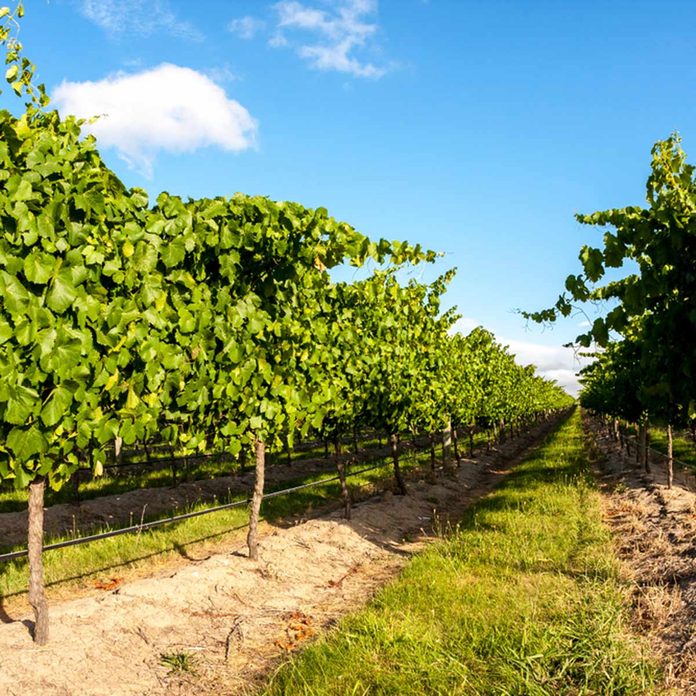
Maintaining
It’s a good idea to keep the area beneath the vines free of competing vegetation. This is best done with a stone or gravel mulch, which reflects sunlight back to the plants and won’t break down and make the soil too rich over time (which encourages the growth of foliage rather than flowers and fruit). View our handy mulch guide.
Some gardeners who grow grapes remove flowers the first couple of years so plants can concentrate their energy on forming roots and sturdier canes.
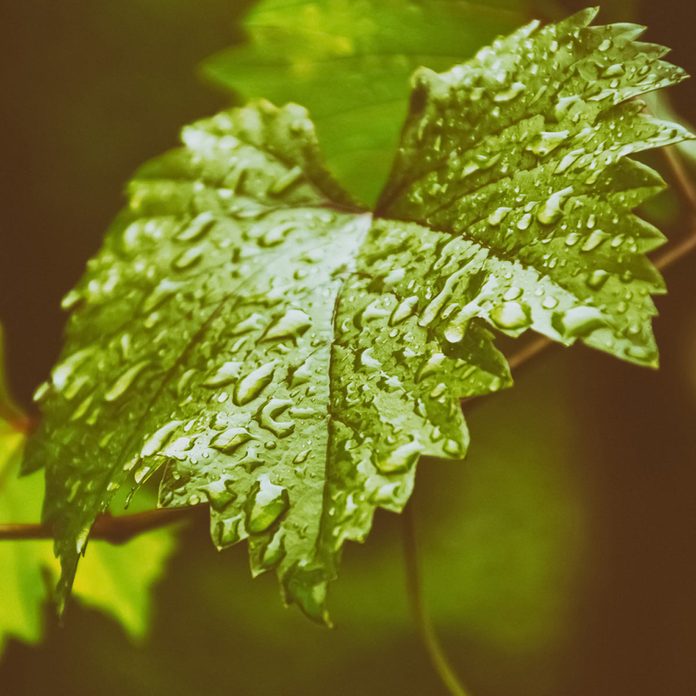
Watering
Watering is important the first year or two, as new plants become established. But grapevines are deep-rooted and therefore become more drought tolerant as they mature. While withholding water can be beneficial when making certain kinds of wine, those who grow grapes for snacking will have plumper, juicier fruit if grapevines are irrigated during dry spells. Learn about easier watering techniques.
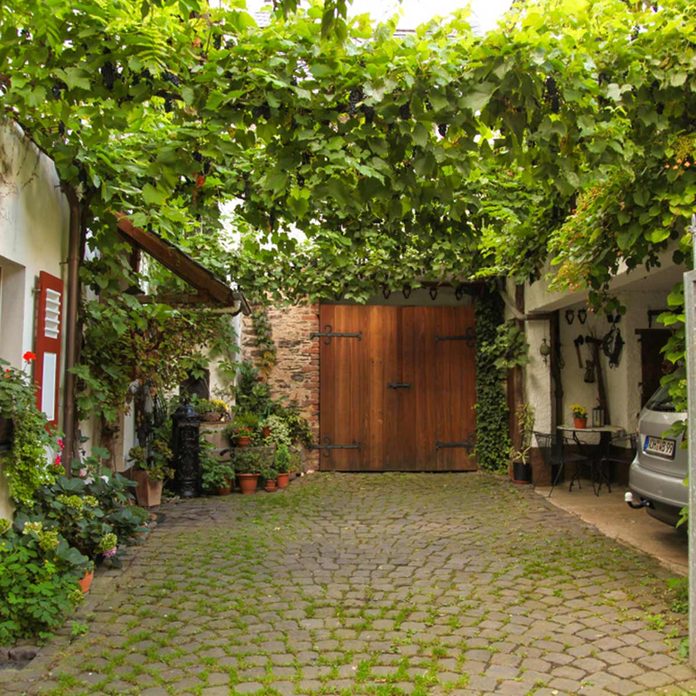
Landscaping
Not everyone who wants to grow grapes has an acreage to rely on. Fear not, because grapes are easily integrated into the home landscape. Here’s one example: a grapevine-covered pergola. It’s pretty, gives you shade, and can still be harvested just like a fancy vineyard. Learn more about garden structures such as pergolas and arbors.
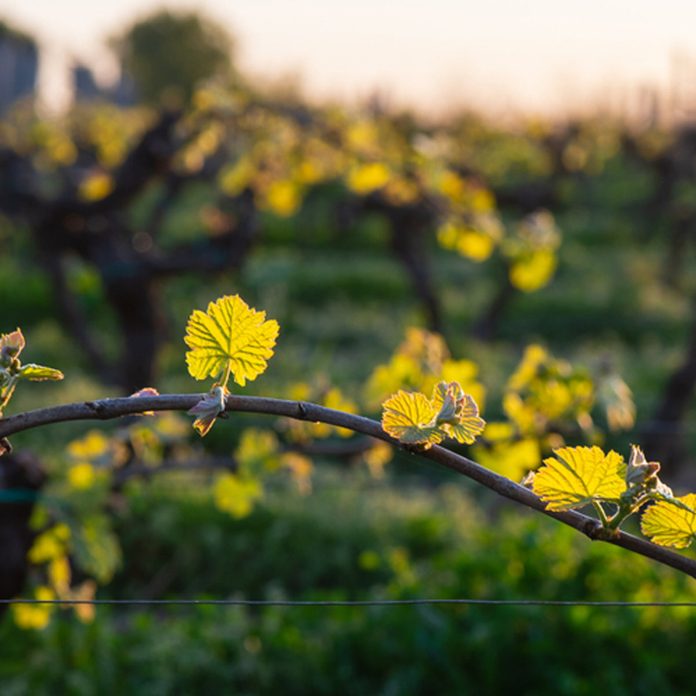
Enjoying
Grapevines have an undeniable beauty throughout the season. There’s the rustic, architectural interest of dormant vines in winter, the colorful new foliage of spring (shown), and the mouth-watering bundles of fruit in late summer and fall. Some grapevines even have pretty fall foliage! No wonder more and more gardeners are discovering the value of growing grapes.